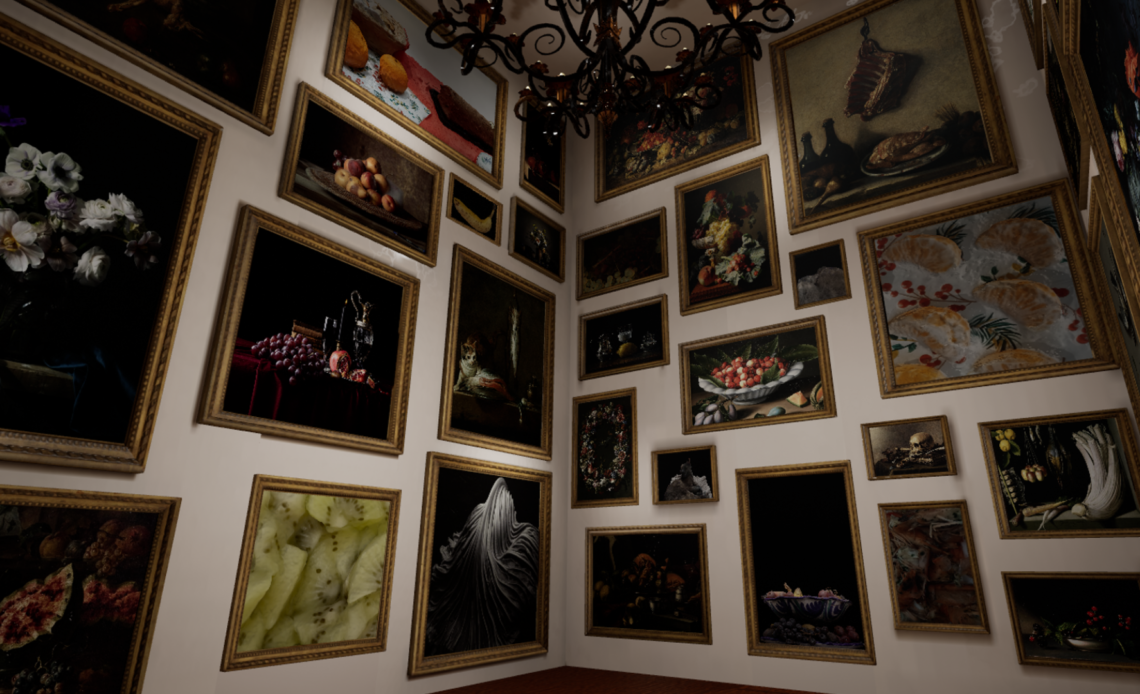
"Living Nature" explores new forms of still life in the digital age.
Crédits photos : Vincent Carpintero-Pérez
Vincent Carpintero-Pérez has created “Living Nature”, a virtual museum in which still lifes are transformed into 3D animation. With this artwork, the French artist aims to show how digital technology has changed some of our representations. “Living Nature” is part of the Art&VR Gallery’s selection for the next Recto VRso digital art festival, on April 11-14, 2024.
The age of virtual museums
In “Living Nature”, users are immersed in a virtual museum using a virtual reality headset. In this exhibition room, generated in 3D, different paintings are hung on the wall, representing still lifes. Users can interact with the paintings. In particular, they can go inside the paintings, where the painted subject comes to life.
In this way, the still life becomes animated, as if it were alive thanks to digital technology. No longer a static object, it becomes tangible in a virtual imaginary world. The user, for his part, “is at the same time the spectator of the artworks that surround himself and the actor of his environment by mutually interacting with the artworks“, explains the artist.
This experience was created using photogrammetry. 3D scans were made of each still life. Vincent Carpintero-Pérez is a specialist in photogrammetry in art. His main area of research is the representation of still life and its evolution in the digital world.
Still life comes alive
When the user ‘enters’ the still life, a new experience is triggered, in another universe, another time. He is faced with a new representation of still life, which becomes alive. The advent of digital technology has profoundly transformed this artistic movement, which emerged in the 16th century, and opened up new perspectives. “When we display a digital image, we therefore calculate an immaterial and timeless image, an image which updates in realtime,” explains the artist.
There is no longer any real temporality, and the experience becomes a personal process. “The digital work no longer lives as an experience but becomes an “experientiality” : it continues over time through the players“. The artist explains that the artwork continues to exist even after the user’s experience has ended. The user is a spect-actor, participating in the construction of the work of art and making his own interpretation of it.
The artist goes further, stating that “the hybridization between real time and virtual time is symbolized by the crossing of the painting“. In fact, we move from a two-dimensional dimension to a 3D universe, from a fixed, framed space to an open, dynamic world, from a real and virtual temporality to a timeless temporality, where the artwork lives and transforms as individuals move through it.
“Living Nature” is an artwork that explores the new forms and representations of art that have emerged with digital technology. It will be on show at the 7th edition of the Recto VRso digital art festival, on April 11-14, 2024.


